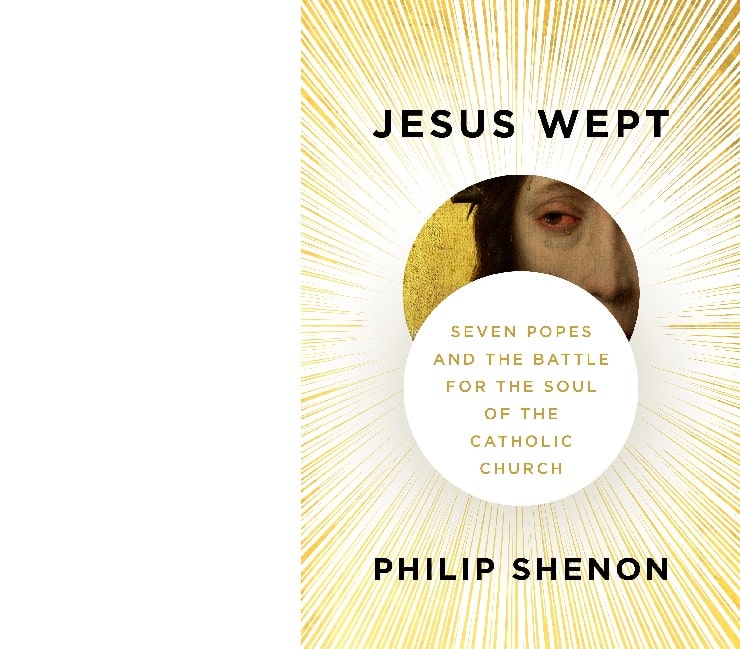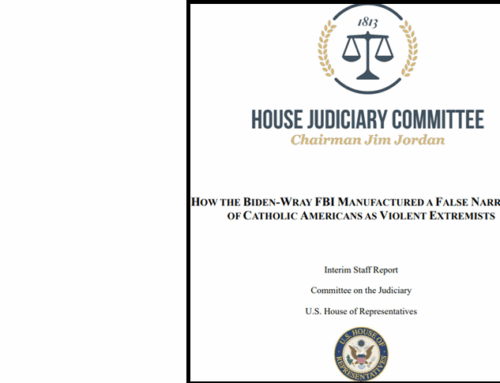This is a shortened version of an article that appears in the July/August edition of Catalyst, our journal that is available to members.
Every now and then along comes a book on the Catholic Church that causes quite a stir. This is certainly true of Jesus Wept: Seven Popes and the Battle for the Soul of the Catholic Church. Written by former New York Times reporter Philip Shenon, it has been hailed by most left-wing critics of the Church as must-read.
The book is strewn with inaccuracies, some of which are minor (he gets Vatican departments confused), others of which are very serious (e.g., his rendering of historical events).
“The Vatican had always portrayed the so-called doctrine of priestly celibacy as eternal and irreversible, but it was neither. It is not demanded in the Gospels, nor was it as a way of life followed by the twelve apostles.” The second sentence is accurate but the first is not.
Leaving aside the snide reference to “the so-called” doctrine, priestly celibacy is not a doctrine of the Catholic Church. It is a discipline, one that was not invoked in the early Church and can be reversed today. Not to know the difference between a doctrine and a discipline would be astounding for a college student studying theology, never mind an author who professes to be an expert.
Shenon’s grasp of Church history is appalling. He speaks about “the imprisonment of Galileo in the seventeenth century because he rejected the church’s view that the sun rotated around the earth.” The fact is Galileo was never imprisoned. He spent his time under “house arrest” in an apartment in a Vatican palace, with a servant. More important, his work was initially praised by the Catholic Church: Pope Urban VIII bestowed on him many gifts and medals.
Galileo did not get into trouble because of his ideas; after all, his ideas were taken from Copernicus, a priest who was never punished (on the contrary, Copernicus’s theory found a receptive audience with Pope Clement VII). What got him into trouble was presenting his unverified claims as fact—that was the heresy.
Shenon writes that during the Inquisition, “people accused of heresy were regularly burned at the stake” on Vatican orders. Wrong again. It was the secular authorities—not the Church’s authorities—that burned heretics. In fact, the Church saw heretics as lost sheep who needed to be brought back into the fold.
The Church’s response to the Holocaust is also badly misrepresented by Shenon. The old canard about Pope Pius XII being “silent”—it has been thoroughly debunked—surfaces again. Not only did the New York Times commend Pius in two editorials for not being silent at that time, the Vatican archives underscore his heroics.
What Shenon says about Mother Teresa is despicable. He says that “Her private correspondence, made public after her death in 1997, showed she was tormented by uncertainty about the existence of heaven—and even of God. She felt no presence of God whatsoever in her life.”
To be sure, Mother Teresa confessed to having “dark nights,” times when she no longer felt the presence of Jesus in her life. When this story broke in 2007, I wrote to Father Brian Kolodiejchuk, her advocate for sainthood, about this issue.
He agreed with my comment, made on TV to Mother Teresa critic Christopher Hitchens, that “there is a profound difference between ‘feeling’ and ‘believing.’” He added, “Though Mother Teresa did not feel Jesus’ presence in the Eucharist, her firm belief in the Real Presence cannot be questioned….” He offered many examples, taken from her letters and behavior, to buttress this point.
On the issue of sexuality, Shenon is just as delinquent. He accuses Pope Paul VI and Pope Benedict XVI of being opposed to “sexual freedom.” What Paul was railing against was the sexual exploitation of women by men—that would make him a feminist in some circles. Even more remarkable is Shenon’s bewilderment with Benedict for opposing sex-reassignment surgery. If this has to be explained, the man is clueless.
Shenon refuses to blame homosexual priests for most of the molestation, falsely claiming they were pedophiles. He even labels Father Marcial Maciel Degollado a pedophile. This is astonishing. There is no wiggle room for him on this. Maciel was a drug-addicted predator who fathered several children, raped at least sixty postpubescent boys, and had sex with at least twenty seminarians.
In the beginning of his book, Shenon correctly notes that the enemies of Pope Benedict XVI called him, “God’s Rottweiler.” In 2012, the New York Times called me “The Rottweiler’s Rottweiler.” I wear that nickname as a badge of honor. I will always defend him from those who seek to malign him.
The Catholic Church has a long history of accomplishments. It also has its dirty laundry. When assessing any institution, it is important to get the facts straight. What Philip Shenon has done is a disgrace. He seeks to discredit the Church, but his sloppy—even horrendous—scholarship renders him an unserious critic.









